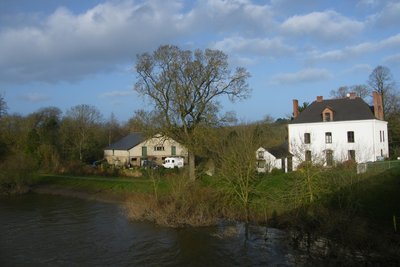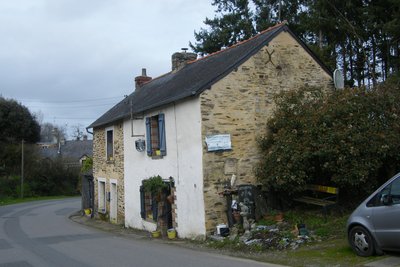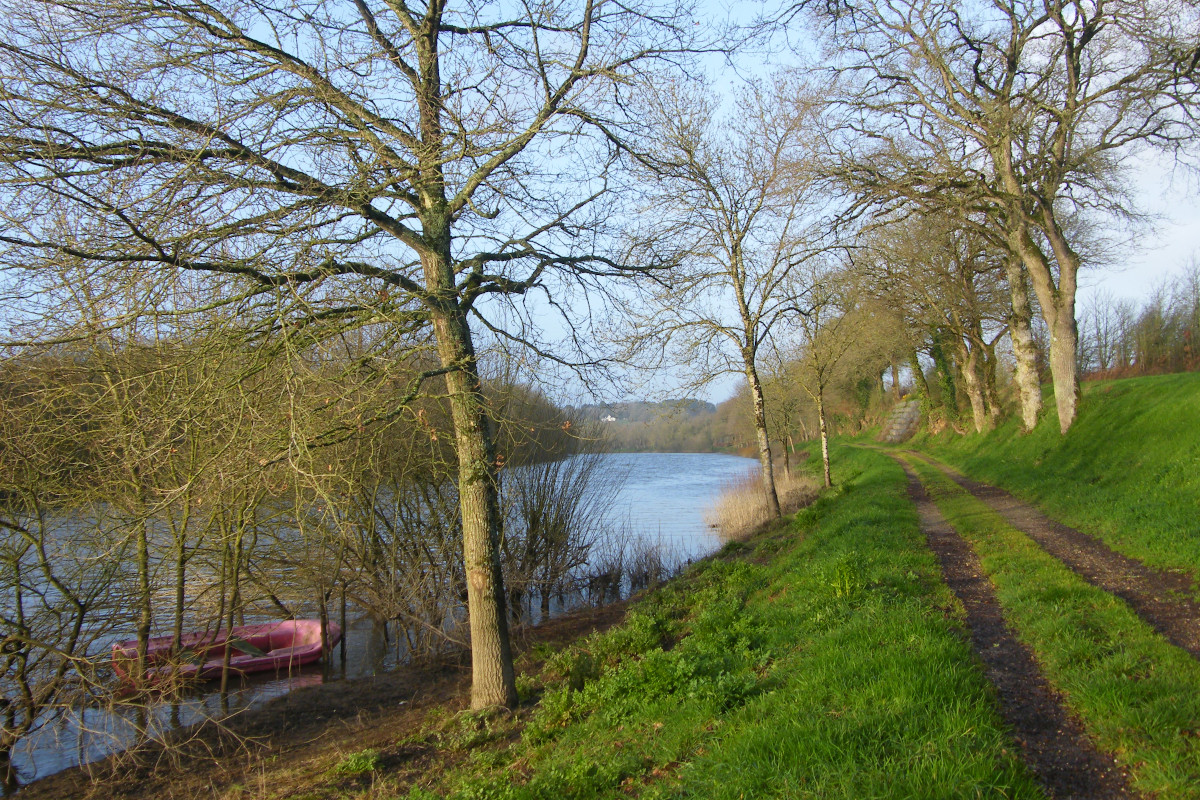
14. from Marsac-sur-Don to Langon
This stage will start along La Vilaine. The route leaves it fairly quickly to join the Don, first along its banks, then moves away from it to climb back up to the crest line.
5 points of interest
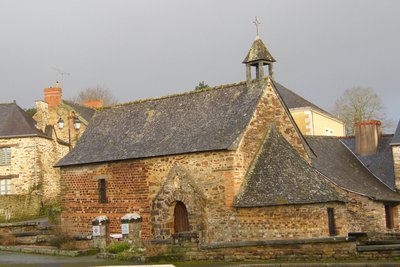
Chapelle Ste Agathe - Amis Bretons de Colomban CulturalSte Agathe Chapel
In antiquity, Gallo-Roman thermal baths with apse in cul de four including a painted decoration of the 2nd century discovered in 1839 and representing "Venus at the toilet", then transformed into a church in the 6th century dedicated to St Vernier then into a funeral chapel, the chapel Ste Agathe is classified as a historical monument.
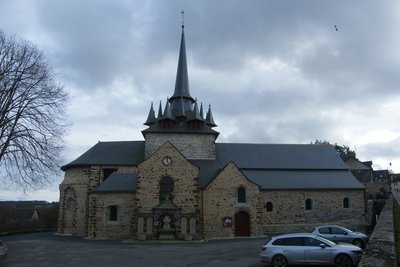
Eglise de Langon - Amis Bretons de Colomban CulturalChurch of Langon
Romanesque church built at the beginning of the 10th century by the monks of St Sauveur de Redon and enlarged in the following centuries.
Its bell tower with its twelve bells symbolizes the twelve apostles around the Eternal Father.
In the North apsidiole, 13th and 14th century mural painting.
It is dedicated to St Peter and Paul and partially listed as a Historic Monument.
It has just been totally restored.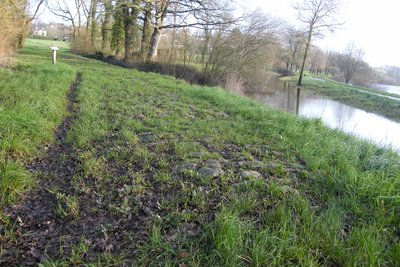
Voie romaine - Amis Bretons de Colomban CulturalRoman road
This section of road, which is curved and paved with shale and sandstone, is about 100 metres long and 4 metres wide and is known in the collective memory as the "Roman road". It is said to have linked Nantes to Corseul. However, no element has been found to certify its Roman rather than medieval origin.
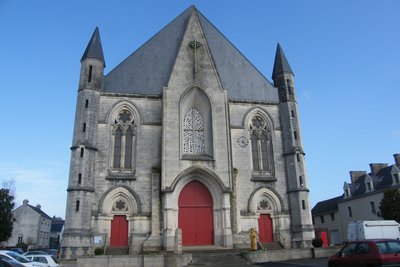
Eglise de Guémené Penfao - extérieur - Amis Bretons de Colomban CulturalChurch of Guémené Penfao
The first church in Guémené Penfao was badly damaged by a fire during the Revolution in a fight between Royalists and Revolutionaries. It was only very late (1841) and partially restored. The increase in population led to the construction of a new church in 1879. The first stone was laid on 21 September 1884 and the first mass was celebrated on 4 July 1886. The large dimensions of the building imposed an atypical Nor-South orientation to adapt to the terrain. The originally planned 60m bell tower was never built.
In front of the church, there is a statue and a stele recalling the situation of Guémené 1600km from Santiago de Compostela.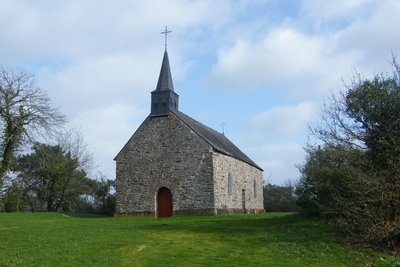
Chapelle Ste Anne des Lieux Saints - Amis Bretons de Colomban CulturalSt. Anne's Chapel of the Holy Places
The chapel of the Holy Places or Lessaint is built on the site of a former leper colony. Located on the old Roman road between Blain and Guémené, it dominates the Don valley. It has several frescoes.
Pilgrimage to Ste Anne on the last Sunday of July.
Description
From the chapel of Ste Agathe, take, on the left of the school, the rue de la Bimais. At its end, take the road on the left to pass under the railway. Then take, on the right, the road in front of the water treatment plant, then, the first path on the right to join the railway and go along it. Join La Vilaine and go along it on the right up to the road bridge that crosses it.
- Cross the Vilaine by the bridge, then the railway, and continue straight ahead up to the church. Continue on the rue de la Résistance, and at the crossroads, turn right towards Plaisance. After the village, turn right. Do the same at the next crossroads and join the village of Le Châtelais. In the village, at the crossroads, turn left, then right and left to join the Martinais. Then continue on this road until you reach the crossroads indicating the village of Beau Soleil. Then turn right to join the D15.
- Turn left on the D15 and take the first road on the right up to the village of Feuilly after passing under the old railway line. In the village, turn left onto the D125. Follow it to the old gatekeeper's house. Turn right on the old railway track. Follow it until the entrance to Guémené Penfao.
- At the entrance of Guémené, turn left into Avenue de la Garenne, then right into Rue Nominoë. Continue straight ahead, by the rue Eugène Leblay, and the path passing to the left of the school. Rejoin the church.
- Take, in front of the church, the rue de l'Église. At the roundabout, cross the square diagonally, and turn left onto rue du Lavoir. Join Le Don and cross it by the footbridge. At the exit of the footbridge, turn left to join the banks of the Don and follow them. (yellow and red markings + Compostelle). When the valley becomes narrower, take the path that winds its way up to the plateau through the woods (yellow and red markings + Compostelle).
- When you arrive on the road which goes along the pond of the valley, turn left, pass the dike and continue on the road. At the left bend, take the track which goes straight on. Follow this track up to a road. Then turn left and join the village of Tréguely. At the end of the village, take the road that goes up to the right. Before the crossroads, turn left onto the road and join the D42 . Turn right and, at the crossroads with the Calvary, turn left onto the D125 towards Marsac.
- At the first crossroads, take the track on the left and follow it up to the chapel des Lieux-Saints. Take the track on the left of the chapel and which passes below it. At the road turn left and, at the crossroads, turn right (signposted Compostelle) and continue up to the village of La Noë. Go through the village and continue until you reach the D124, then turn right towards Marsac by taking the path parallel to the road and reach the church.
- Departure : Ste Agathe Chapel, Grande Rue, 35660, Langon
- Arrival : Eglise St Martin - Rue Isaie Rabu, 44170, Marsac-sur-Don
- Towns crossed : Bretagne and Pays de la Loire
Altimetric profile
Recommandations
Warning: some passages can be "very wet" in winter (along La Vilaine or Le Don).
The route follows the route of the Ways of Compostela (Capitals Way)
Transport
Langon is accessible by train (SNCF Rennes Redon line).
Report a problem or an error
If you have found an error on this page or if you have noticed any problems during your hike, please report them to us here:

